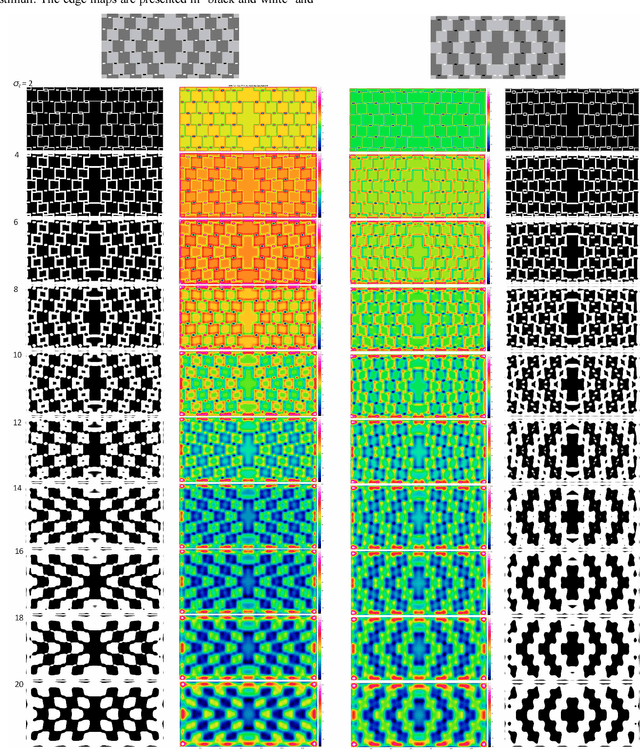Prediction of Dashed Café Wall illusion by the Classical Receptive Field Model
Paper and Code
Feb 08, 2019
The Caf\'e Wall illusion is one of a class of tilt illusions where lines that are parallel appear to be tilted. We demonstrate that a simple Differences of Gaussian model provides an explanatory mechanism for the illusory tilt perceived in a family of Caf\'e Wall illusion generalizes to the dashed versions of Caf\'e Wall. Our explanation models the visual mechanisms in low-level stages that can reveal tilt cues in Geometrical distortion illusions such as Tile illusions particularly Caf\'e Wall illusions. For this, we simulate the activation of the retinal/cortical simple cells in responses to these patterns based on a Classical Receptive Field (CRF) model to explain tilt effects in these illusions. Previously, it was assumed that all these visual experiences of tilt arise from the orientation selectivity properties described for more complex cortical cells. An estimation of an overall tilt angle perceived in these illusions is based on the integration of the local tilts detected by simple cells which is presumed to be a key mechanism utilized by the complex cells to create our final perception of tilt.
 Add to Chrome
Add to Chrome Add to Firefox
Add to Firefox Add to Edge
Add to Edge